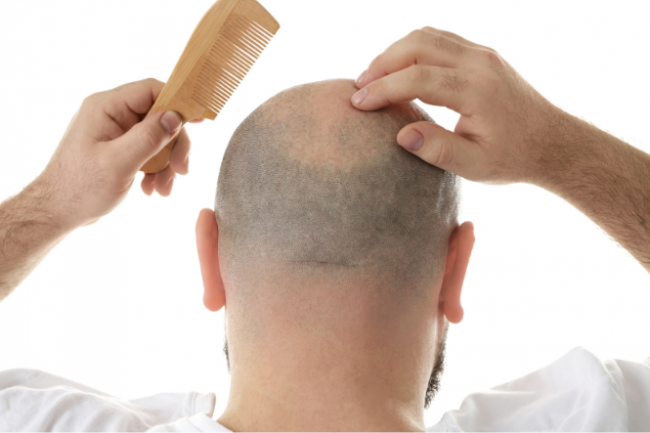Image credit: Canva
Hair cycle of growth and rest
Like your skin and nails, your hair goes through a finely tuned cycle of growth and rest. Hair loss can occur at any time in the cycle.
There are 3 phases in a hair cycle:
- In the first stage, your scalp hair is continually growing. This is called the anagen phase. In this phase, your hair grows about 1–2cm per month. About 90% of your hair is in this stage at any one time. It lasts between 2–5 years.
- The second stage is call the catagen phase, which is when growth stops. About 1–3% of your scalp hair is in this phase at any one time. It lasts for 2–3 weeks.
- The third stage is called the telogen phase. This is a resting phase and it lasts between 1–4 months. About 10% of your scalp hair is in this phase at any one time.
At the end of its resting stage, a hair goes through a shedding phase, which normally results in the growth of a new hair. When a hair is shed, it's replaced by a new hair from the same hair follicle, located just beneath your skin surface.
Male or female hereditary hair loss is caused by genetic or hormonal influences. It is also called androgenic alopecia because it is affected by the hormones called androgens. These are present in both men and women, but in different quantities.
Your risk of hereditary hair loss increases if you have relatives who have experienced hair loss. Your genetic blueprint for hair loss will affect things like:
- how old you are when hair loss begins
- how fast you lose hair
- the pattern and extent of your hair loss/ baldness.
Male hereditary hair loss
Hereditary hair loss in males is also known as male pattern baldness. It is more common with increasing age. The condition affects different populations at different rates and accounts for 99% of hair loss in men. It affects half the male population by the age of 50.
Hair loss starts in men from about the age of 30, but can occur at any age past puberty. How quickly or slowly baldness develops, and the pattern of hair loss, appear to be determined by the genes you inherited from your parents.
Your genes affect how sensitive your scalp is to a hormone called dihydrotestosterone (DHT), which shortens the growth phase of your hair. Your hair follicles also become smaller in response to DHT and you subsequently produce fewer and finer hairs.
Female hereditary hair loss
Female hereditary hair loss is known as female pattern baldness. Its cause is not clearly understood. It can affect women in any age but occurs more commonly after menopause. It usually begins about the age of 30, becomes noticeable about the age of 40, and more noticeable after menopause. By the age of 50 at least a quarter of women experience some degree of hair thinning.
It is also thought that female hereditary hair loss is influenced by genetics and the androgen hormones, although the link is not as strong as in male hereditary hair loss.
In female hereditary hair loss, finer hairs with less colour are produced, and hairs in the resting (telogen) phase fall out more easily.
Other forms of hair loss
Hair loss that is not hereditary is considered to be abnormal. It may be caused by:
- pregnancy
- hormonal or other medicines
- severe nutritional deficiencies
- chemotherapy
- autoimmune disorders
- an underactive or overactive thyroid gland
- scalp trauma, including reactions to hair care products and hair grooming methods
- stress
- a condition that involves hair-pulling (trichotillomania).
Read more about abnormal hair loss.







